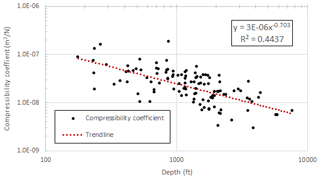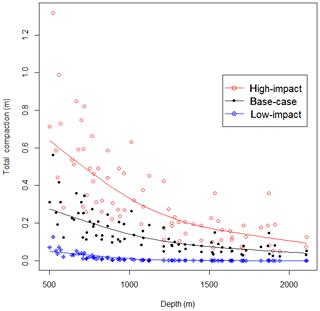Assessment of Subsidence Risk Associated with Brackish Groundwater Development in the Coastal Lowlands Aquifer, Houston, Texas, USA
Significant undeveloped brackish groundwater resources exist within the Coastal Lowlands Aquifer System (Gulf Coast Aquifer System) near Houston, Texas, USA. As the development of these frontier resources is imminent, an improved understanding of the impact development may have on the availability of the resource and land subsidence is needed. In this region, land subsidence is caused by the depressurization of the aquifer and compaction of the many clay lenses in the subsurface. The Gulf Coast Aquifer System in the study area includes three primary water bearing units (from shallow to deep): the Chicot (Pleistocene and Pliocene) and Evangeline (Pliocene and Miocene) aquifers, and the Jasper aquifer (Miocene). Although there has been much research and data supporting the causal relation between water-level decline and subsidence in the areas of fresh groundwater development, little data exists to inform on the potential subsidence impacts upon deeper brackish groundwater development. Data were compiled, and multiple hydrologic parameters were utilized to improve the understanding of the brackish resources within the study area. Geophysical logs were compiled and analysed to refine the aquifer stratigraphy, determine the binary classification of sand and clay, and estimate the groundwater salinity. These data were used to develop a MODFLOW groundwater flow model to estimate the risk of compaction and land subsidence upon the development of brackish zones within the Jasper aquifer. Compiled data detailing the total clay thickness, clay bed thickness, and clay bed location were input into the model along with a hypothetical stress to predict compaction within the Jasper aquifer across the study area while incorporating the observed heterogeneity in clay properties. Using the results from the model simulations and two other risk performance measures (depth of burial and surface flood risk), the total subsidence normalized risk score was estimated. The results of this study confirm the potential for compaction in the Jasper aquifer and for land subsidence to occur upon development. Areas with the highest risk are located in the up-dip, inland areas, near where the aquifer becomes fresh and is currently used for municipal supply. The results will inform water managers and planners in the Houston area on the future availability of brackish groundwater resources.









